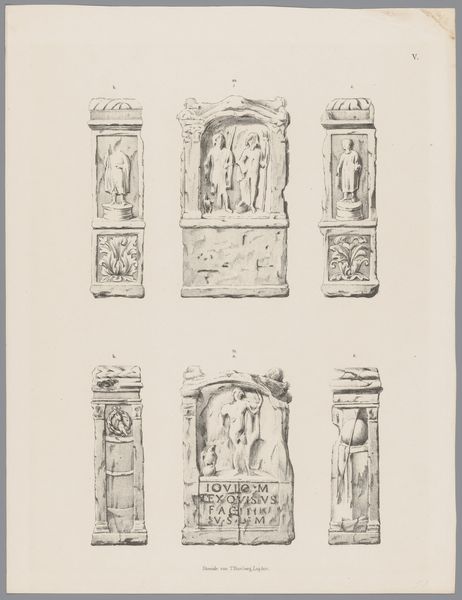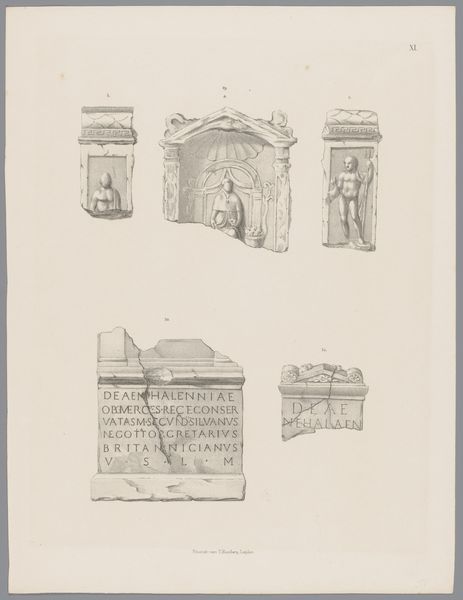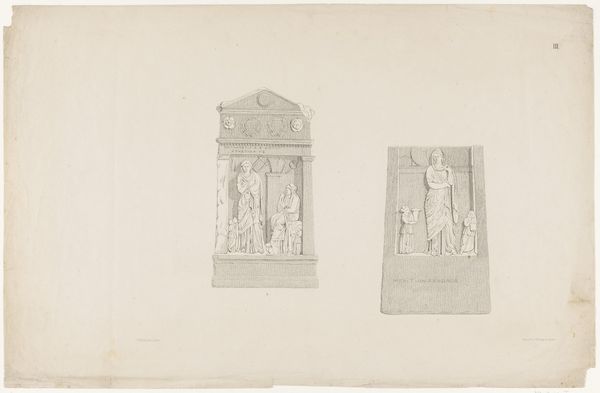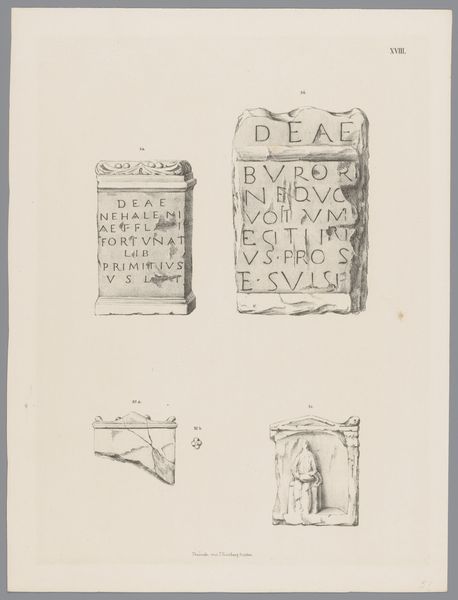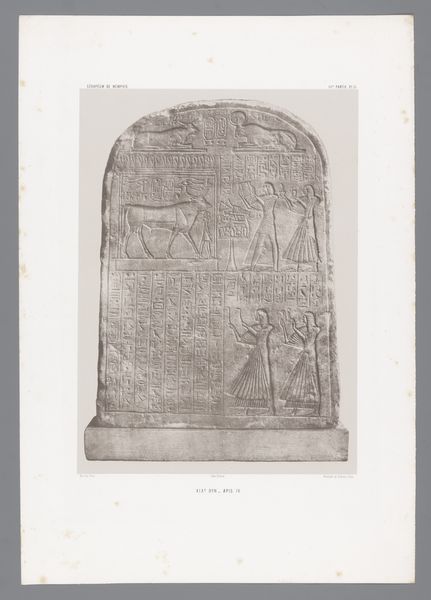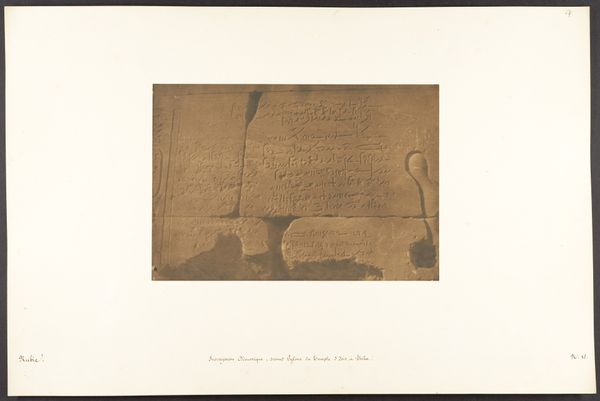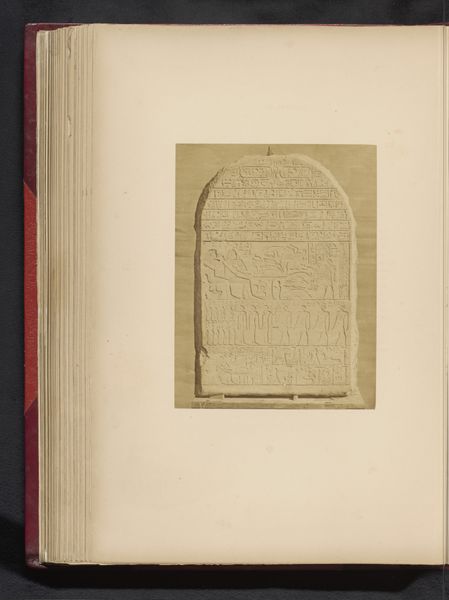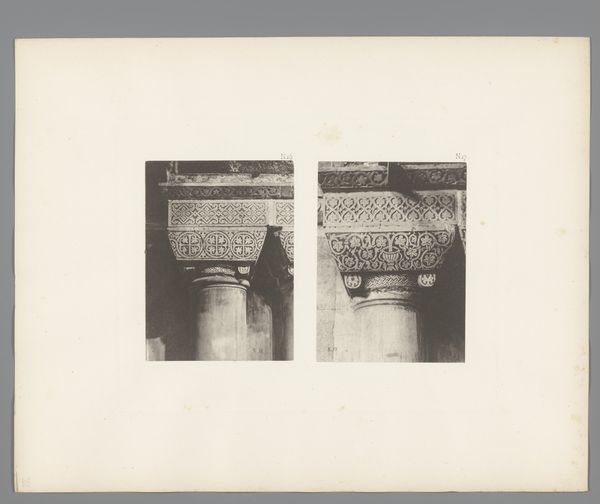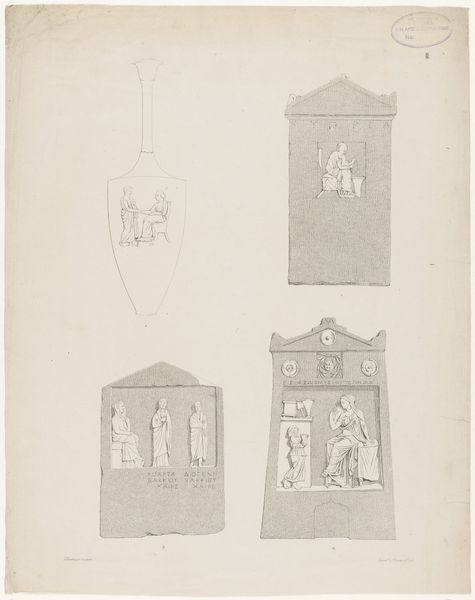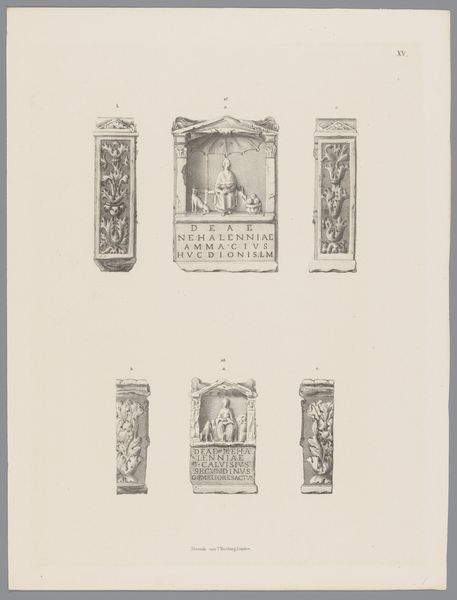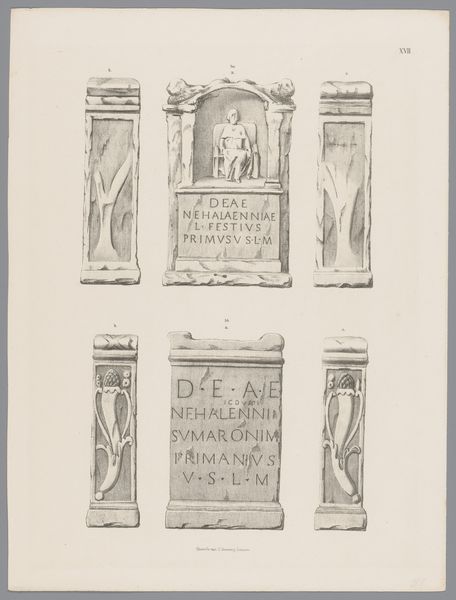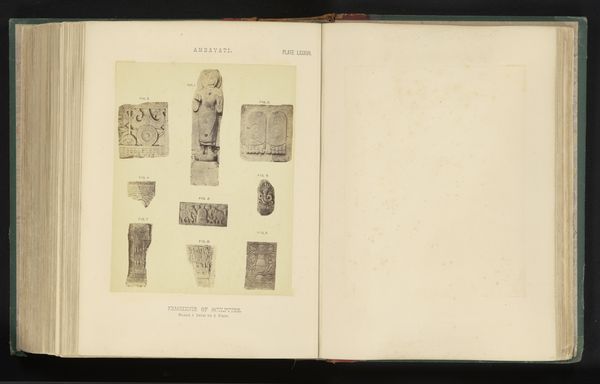
Drie stèles met hiërogliefen, gevonden bij het Serapeum te Memphis 1852 - 1857
0:00
0:00
print, relief, photography, gelatin-silver-print
# print
#
relief
#
landscape
#
ancient-egyptian-art
#
figuration
#
photography
#
ancient-mediterranean
#
gelatin-silver-print
Dimensions: height 232 mm, width 388 mm
Copyright: Rijks Museum: Open Domain
Curator: My first thought seeing these steles captured by Charles Marville—there's a quiet dignity, isn’t there? It feels so reverent. Editor: Dignity absolutely, and perhaps a necessary recontextualization, a Western gaze capturing the cultural relics of a colonized nation between 1852 and 1857. This gelatin silver print, entitled "Three steles with hieroglyphs, found at the Serapeum in Memphis," freezes a moment of encounter—or rather, a moment of appropriation. Curator: Appropriation, always such a loaded term. But I see what you mean. These steles…they were already so old when this photo was taken, holding stories within the stone that Marville, and perhaps we even now, couldn’t possibly fully grasp. Isn’t there a tragedy there, a chasm between our understanding and the lives of the people who created them? Editor: Precisely! It pushes us to interrogate the dynamics of power inherent in representation itself. How can we engage with such an image ethically? Can we even begin to appreciate these pieces fully detached from the social and political structures that created them? For instance, the Serapium itself—a temple dedicated to the syncretic Greco-Egyptian god Serapis—was a nexus of cultural exchange, now filtered through a 19th-century French photographer's eye. Curator: That’s so fascinating. The level of craftsmanship, of course, is striking— the precision with which they rendered those hieroglyphs on such solid stone...it's just…wow. I want to reach out and touch it! Run my fingers along the carvings. But these are prints, and so that experience is twice removed! Editor: Absolutely. But in its stillness, we find the prompt to remember the labor and skill poured into those ancient creations, and more broadly, how context and understanding allow us to see more deeply. Curator: And so we circle back to where we began. There’s this inescapable gap, this poignant distance, reminding us to acknowledge both the beauty and the complicated truths embedded within this captured history. Editor: Indeed, leaving us not with definitive answers, but rather, with questions about preservation, respect, and the very nature of seeing.
Comments
No comments
Be the first to comment and join the conversation on the ultimate creative platform.
